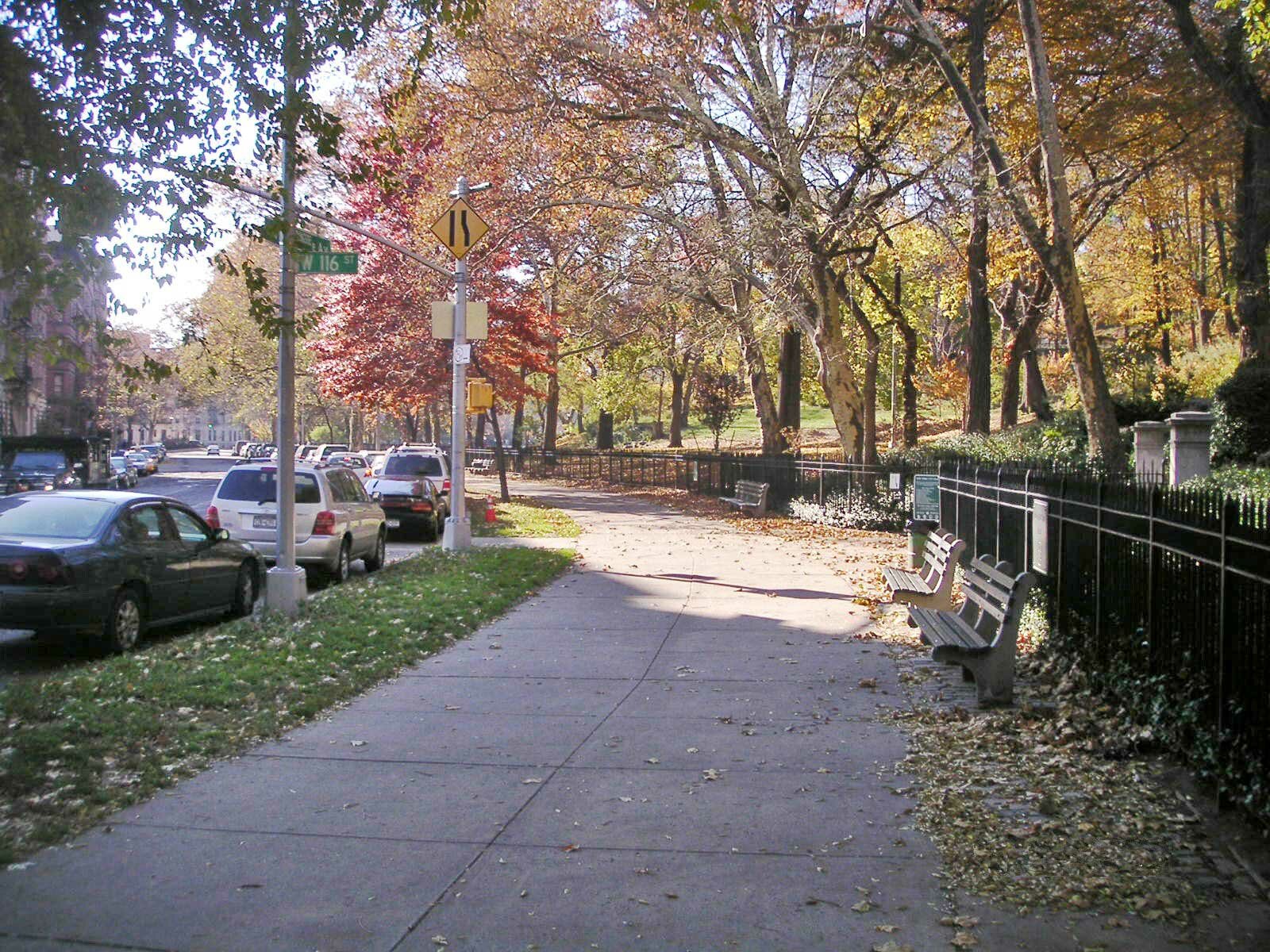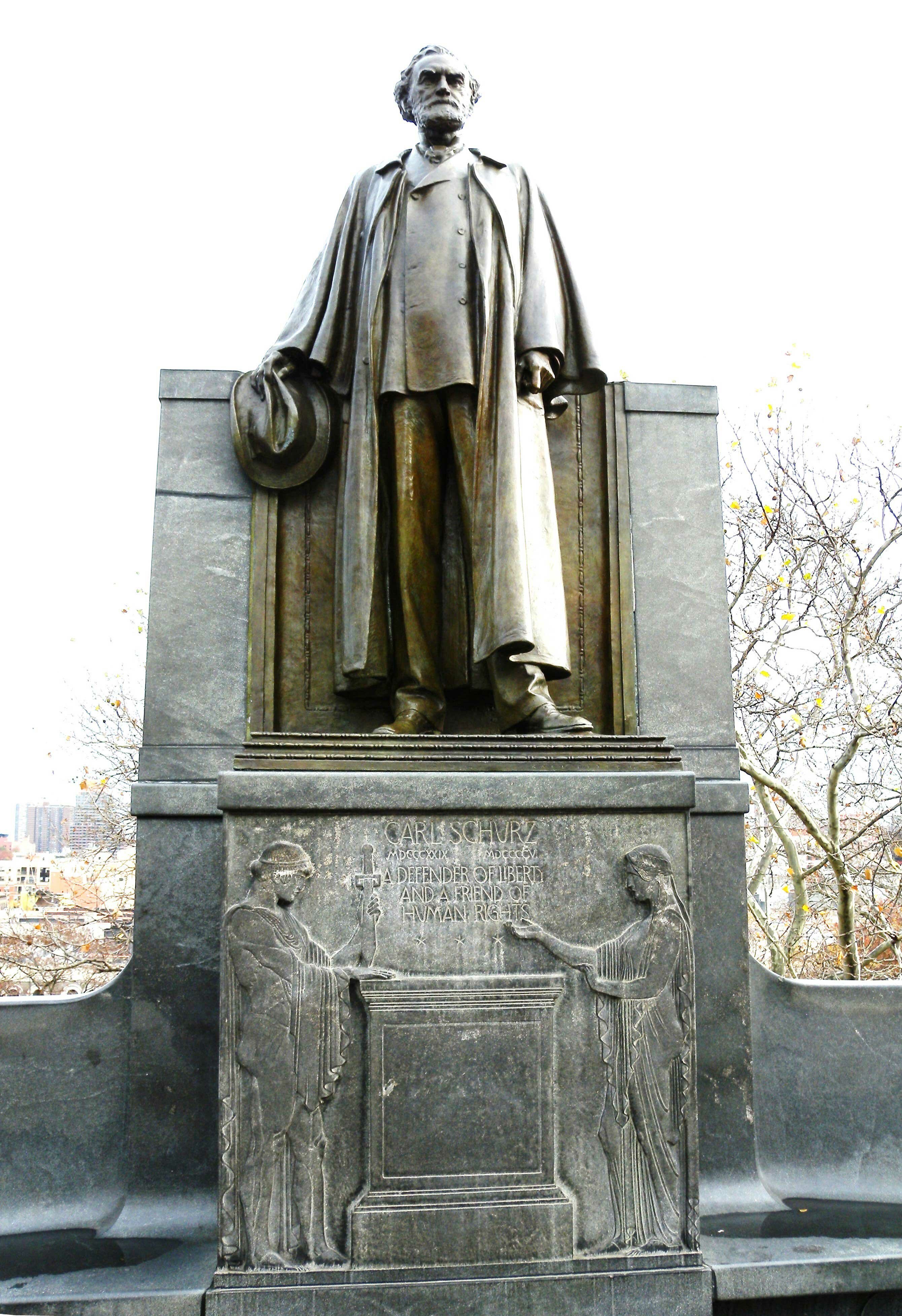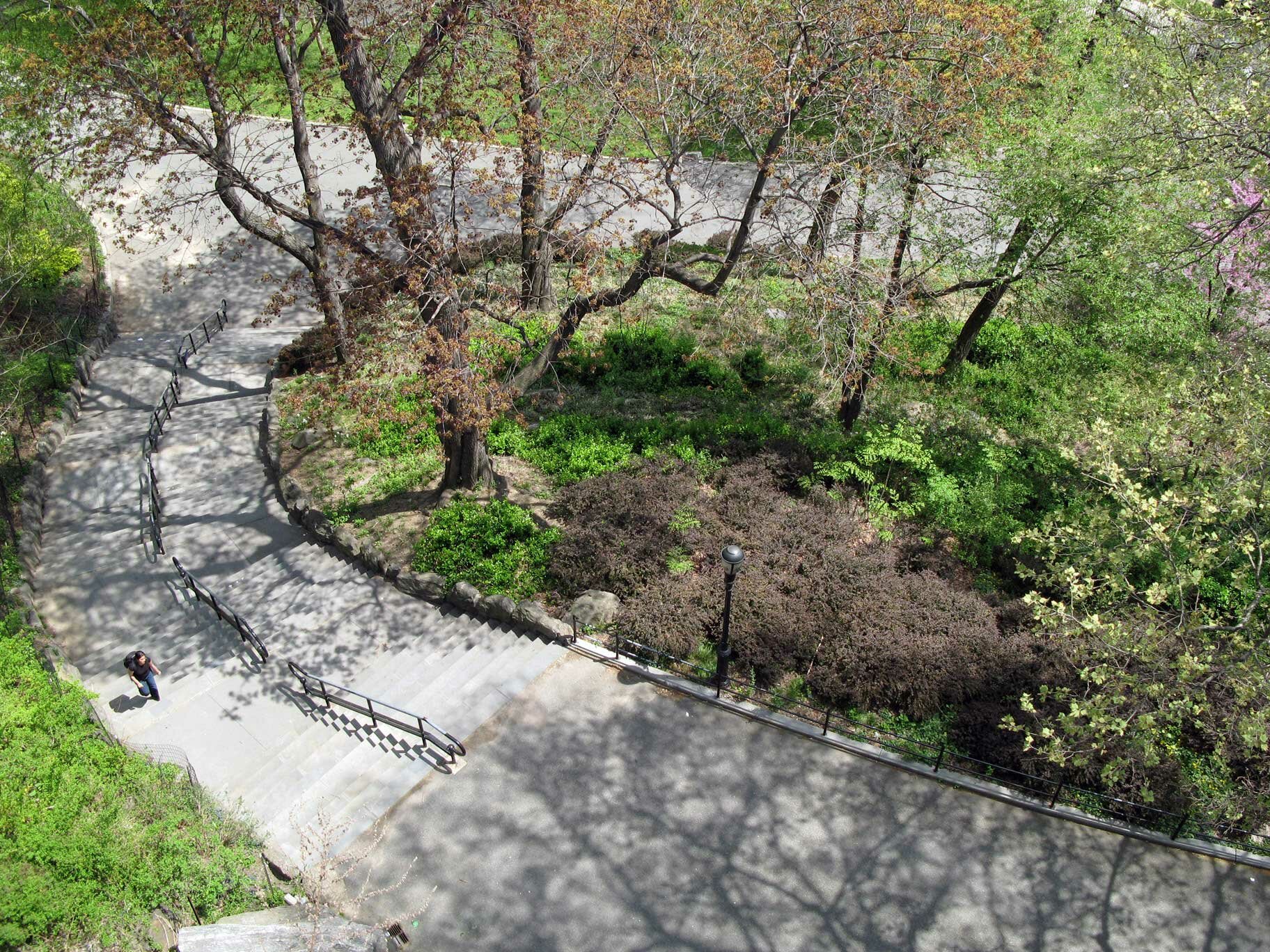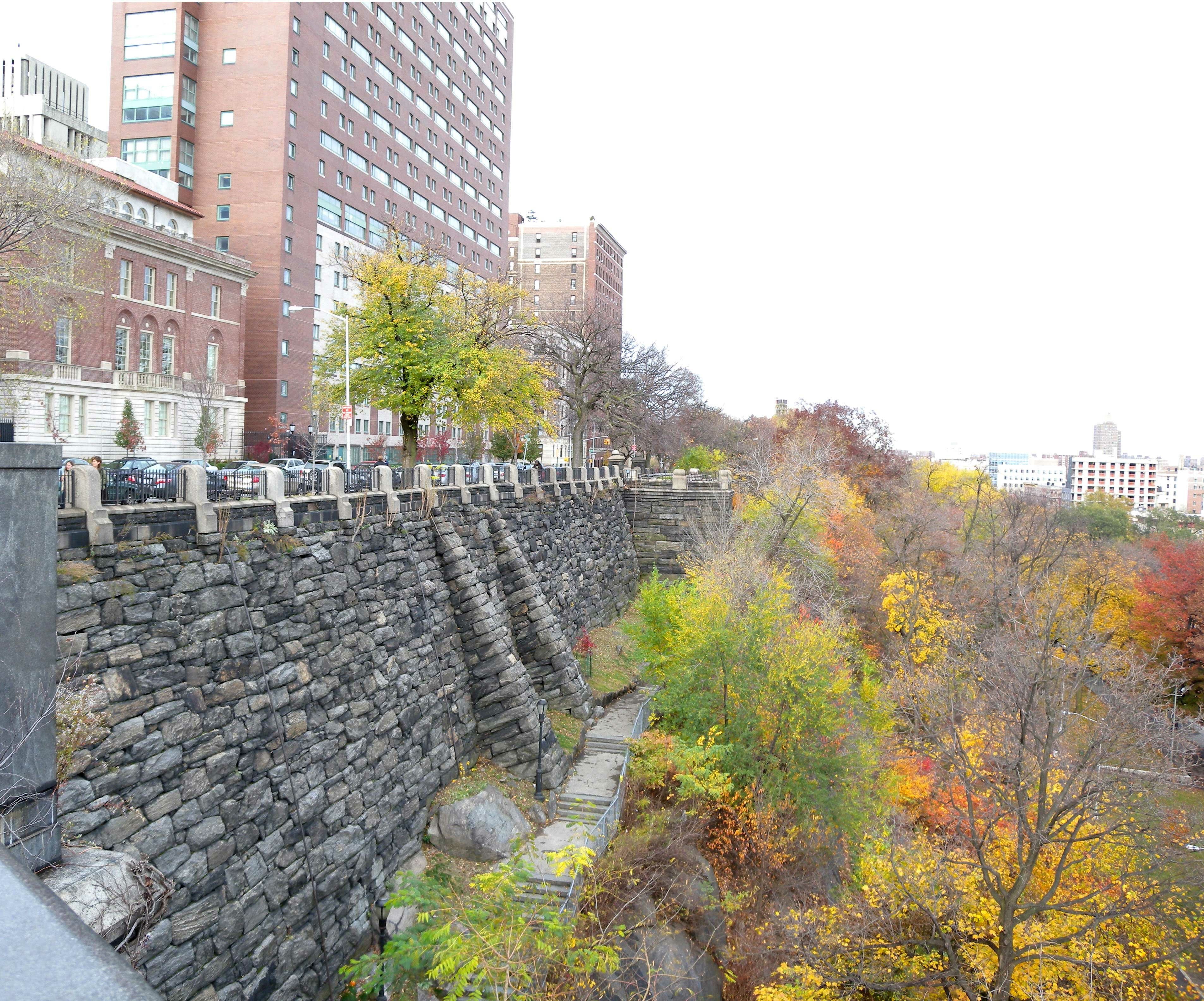-
Morningside Park (New York City)
,What`s here?Natural sights, History and museums,
Morningside Park is a New York City public park primarily located in the Harlem neighborhood of Manhattan, New York City. The 30-acre (12 ha) area occupies 110th to 123rd Streets from Morningside Avenue to Morningside Drive at the border between Harlem and Morningside Heights.
Morningside Park's distinctive natural geography is a rugged cliff of Manhattan schist rock. The park came into existence as a cost-saving measure to avoid the expense of extending the street grid across difficult terrain. It is operated by New York City Department of Parks and Recreation.
Features
The park is one of several promoted by Andrew Haswell Green that owes much of its design to Frederick Law Olmsted and Calvert Vaux. Twentieth century additions include playgrounds, basketball courts, and softball diamonds. Other features include:
- Lafayette and Washington statue (1900) by Frédéric Auguste Bartholdi, an exact replica of a statue in the Place des États-Unis, Paris
- The Carl Schurz Monument (1913), with a statue by Karl Bitter and setting by architect Henry Bacon, stands on a plaza at Morningside Drive and West 116th Street, overlooking the park, but is officially part of it.
- Seligman (Bear and Faun) fountain (1914) by Edgar Walter
- Dr. Thomas Kiel arboretum
- Waterfall and pond; residents and visitors include great blue herons, night herons, red-winged blackbirds, painted turtles, and mallard ducks
- Baseball diamond and basketball courts
History
The park was first proposed by the Central Park Commissioners in 1867. The city commissioned Frederick Law Olmsted and Calvert Vaux to produce a design for the park in 1873, but the plan was shelved during the economic depression following the Panic of 1873. In 1887 Olmsted and Vaux were asked to modify their original plan to accommodate changed conditions, such as the 116th Street and Eighth Avenue elevated railway station, and construction of the park began.
In 1872, The New York Times predicted that what was named Morningside Park "will doubtless be a favorite resort for children and invalids". In 1887, a group of Civil War veterans camped in the park for a weekend, fired cannon salutes and, in a mock assault, stormed the castlelike retaining walls. The newspaper reported that they scrambled up scaling ladders "like cats" even though most "have doubled their waist measure since the days when they did such climbing as a business".
By the early 20th century, the park was seen as extremely dangerous. Crime in Morningside Park, because of its proximity to Harlem, was often reported as a racial matter. In 1935 The New York Times reported that Teachers College of Columbia University had posted a sign in a dormitory informing students "it is not safe to enter Morningside Park at any time of the day or night".
In 1960, Columbia proposed building a gym in the park at 113th Street. Opposition to the gym crystallized in major student protests in 1968. The university planned to build a gymnasium on the park as a joint project with the city. Protesters believed the planned separate east and west entrances amounted to an attempt to circumvent recent federal law that banned racially segregated facilities. The distinctive local geography and demographics would have opened one end of the gymnasium to African-American Harlem residents and opened the other end to the predominantly white university. University administration under Grayson Kirk denied that this reflected racial bias and stressed that greater park services would benefit the Harlem community. The university abandoned the plan in 1969 after students occupied administration and classroom buildings and shut down the university for several weeks.
By the '70s, Morningside Park, the effective boundary between Morningside Heights and Harlem, had a dangerous reputation, compounded by years of neglect. In 1981 a group of Columbia undergraduates founded the Friends of Morningside Park, which advocated returning what had been a neglected park to its original design. Since its founding, the group has rehabilitated the park through volunteerism. As of 2005, the group had approximately 1,000 volunteers.
In popular culture
145th Street: Short Stories, a story collection by Walter Dean Myers, mentions Morningside Park. CBS's NYC 22 also filmed an episode in the park.
Source: https://en.wikipedia.org/wiki/Morningside_Park_(New_York_City)
Text is available under Creative Commons Attribution-ShareAlike 3.0
If you like, you will definitely enjoy:Morningside Park (New York City)

 Knulclunk - Own">
Knulclunk - Own">
 Jim.henderson - Own">
Jim.henderson - Own">
 Momos - Own">
Momos - Own">
 Jim.henderson - Own">
Jim.henderson - Own">







